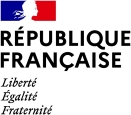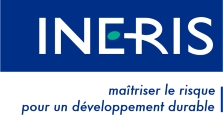Information
Edited on 01/10/2020
As from 1 November 2020, bis(2-methoxyethyl) phthalate, DiPP, DPP, DnHP and 1,2-benzenedicarboxylic acid di-C6-8-branched alkylesters, C7-rich may not be present in textiles, clothing, related accessories and footwear at concentrations higher than 1000 mg/kg (individually or in combination with other phthalates listed in Annex XVII of REACH).
Edited on 09/02/2019
The European Commission adopted on 08 August 2019 an exemption for the use of DEHP in some rubber components of engine systems.
Edited on 07/30/2019
Four phthalates (DEHP, DBP, BBP and DIBP) are now included in the limited substances in homogeneous materials list of some electrical and electronic devices.
Edited on 04/02/2019
In order to simplify your research of alternatives to phthalates, a table compiling all the information about phthalates substitution available on the Phthalates substitution website has just been published !
Edited on 01/24/2019
Ethoxylated alkylphenols (APEO) are added to bisphenols and phthalates already covered by the substitution portal.
Edited on 01/11/2019
PERSTORP, producer of the PEVALEN™ polyolester plasticizer, has entered an agreement with the Italian company ALCOPLAST to increase its annual PEVALEN™ production capacity to 50,000 tons.
Edited on 09/24/2018
The Member State Committee of ECHA supported on 17th April the proposal to identify dicyclohexyl phthalate (DCHP) as a substance of very high concern (SVHC) due to its classification as a toxic substance for reproduction category 1B and to its endocrine disrupting properties with probable serious effects to human health.
Edited on 06/26/2017
After evaluation of the socio-economic impact, SEAC adopted their opinions on restriction proposal on four phthalates: DEHP, DBP, DIBP and BBP.
Edited on 02/09/2017
Developed and marketed by Polyone, the plasticizer for PVC SynPlastTM L9TM-E is phthalate free and offers a wide range of applications (electrical, automotive, building / construction ...).
Edited on 01/23/2017
In December 2016, a majority of EU Member States voted to approve the addition of the following seven phthalates to the List of Substances Subject to Authorization under REACH Regulation: diisopentylphthalate, 1,2-benzenedicarboxylic acid di-C6-8-branched alkyl esters C7-rich, 1,2-benzenedicarboxylic acid, di-C7-11-branched and linear alkyl esters, 1,2-benzenedicarboxylic acid, dipentylester, branched and linear, bis(2-methoxyethyl) phthalate, dipentylphthalate, n-pentyl-isopentylphthalate.

